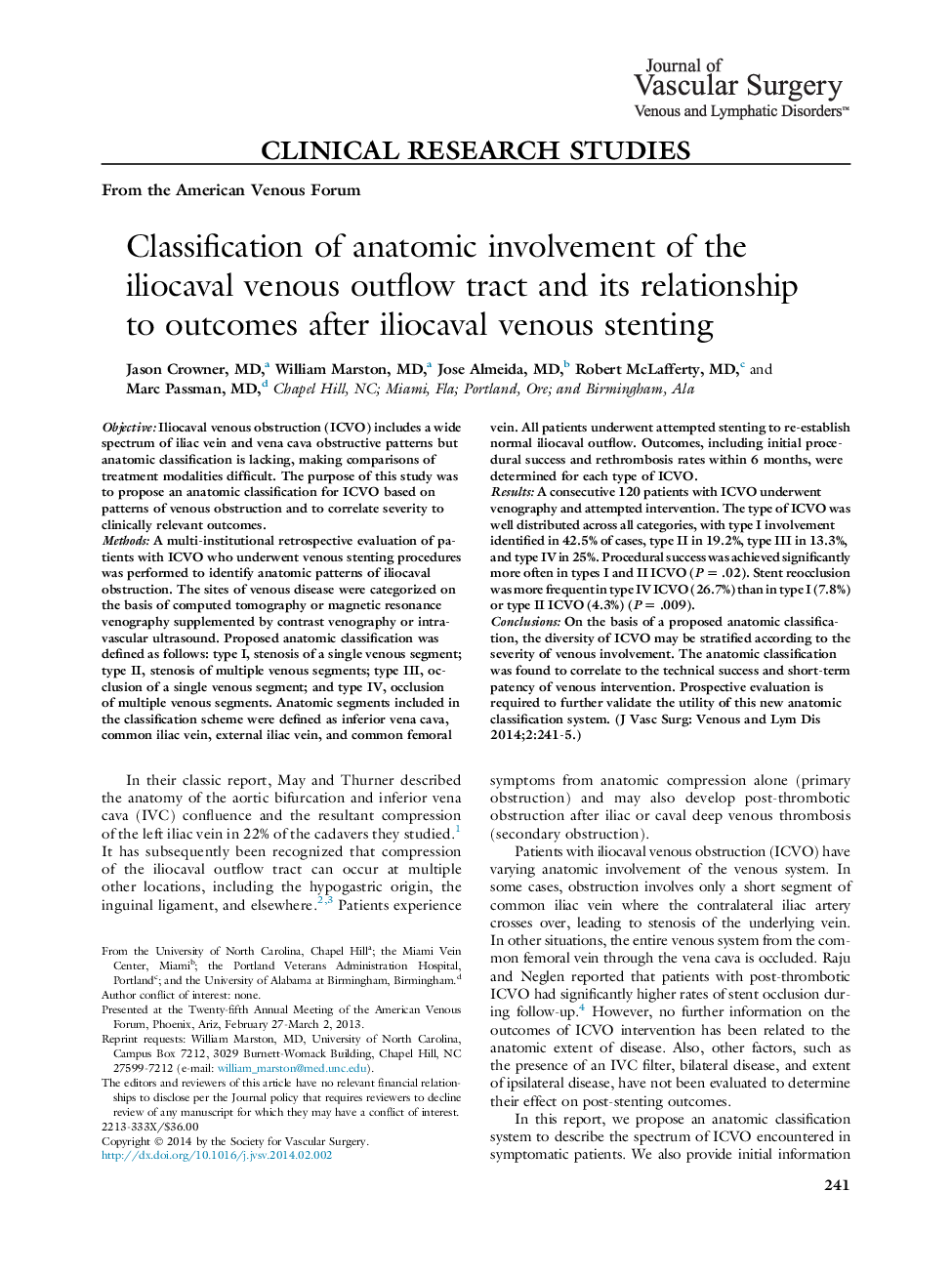| کد مقاله | کد نشریه | سال انتشار | مقاله انگلیسی | نسخه تمام متن |
|---|---|---|---|---|
| 2997852 | 1180169 | 2014 | 5 صفحه PDF | دانلود رایگان |
ObjectiveIliocaval venous obstruction (ICVO) includes a wide spectrum of iliac vein and vena cava obstructive patterns but anatomic classification is lacking, making comparisons of treatment modalities difficult. The purpose of this study was to propose an anatomic classification for ICVO based on patterns of venous obstruction and to correlate severity to clinically relevant outcomes.MethodsA multi-institutional retrospective evaluation of patients with ICVO who underwent venous stenting procedures was performed to identify anatomic patterns of iliocaval obstruction. The sites of venous disease were categorized on the basis of computed tomography or magnetic resonance venography supplemented by contrast venography or intravascular ultrasound. Proposed anatomic classification was defined as follows: type I, stenosis of a single venous segment; type II, stenosis of multiple venous segments; type III, occlusion of a single venous segment; and type IV, occlusion of multiple venous segments. Anatomic segments included in the classification scheme were defined as inferior vena cava, common iliac vein, external iliac vein, and common femoral vein. All patients underwent attempted stenting to re-establish normal iliocaval outflow. Outcomes, including initial procedural success and rethrombosis rates within 6 months, were determined for each type of ICVO.ResultsA consecutive 120 patients with ICVO underwent venography and attempted intervention. The type of ICVO was well distributed across all categories, with type I involvement identified in 42.5% of cases, type II in 19.2%, type III in 13.3%, and type IV in 25%. Procedural success was achieved significantly more often in types I and II ICVO (P = .02). Stent reocclusion was more frequent in type IV ICVO (26.7%) than in type I (7.8%) or type II ICVO (4.3%) (P = .009).ConclusionsOn the basis of a proposed anatomic classification, the diversity of ICVO may be stratified according to the severity of venous involvement. The anatomic classification was found to correlate to the technical success and short-term patency of venous intervention. Prospective evaluation is required to further validate the utility of this new anatomic classification system.
Journal: Journal of Vascular Surgery: Venous and Lymphatic Disorders - Volume 2, Issue 3, July 2014, Pages 241–245
